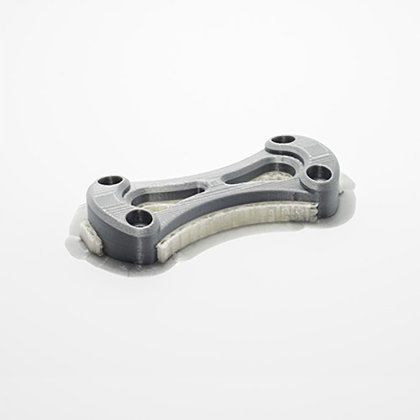Unlocking the Magic of FDM 3D Printing: Transform Your Ideas into Reality!
In today's fast-paced world, innovation and creativity are at the forefront of modern manufacturing. Fused Deposition Modeling (FDM) 3D printing stands out as a groundbreaking technology that has revolutionized how individuals and businesses bring their ideas to life. This additive manufacturing process allows for the creation of three-dimensional objects from a digital file, making it accessible and versatile across various industries. From prototyping to production, FDM 3D printing services cater to a wide array of applications. In this article, we will dive deep into the world of FDM 3D printing, exploring its services, applications, benefits, and tips for choosing the right provider to help you transform your concepts into tangible realities.

Understanding FDM 3D Printing Services
Fused Deposition Modeling (FDM) is a type of 3D printing technology that utilizes thermoplastic materials to create objects layer by layer. The process begins with a digital 3D model, which is sliced into thin horizontal layers by specialized software. The FDM printer then heats and extrudes the thermoplastic filament through a nozzle, depositing it precisely according to the sliced model. This additive approach allows for complex geometries and intricate designs that would be challenging to achieve with traditional manufacturing methods.
Common materials used in FDM printing include PLA (Polylactic Acid), ABS (Acrylonitrile Butadiene Styrene), and PETG (Polyethylene Terephthalate Glycol). Each material has its own set of properties, such as strength, flexibility, and temperature resistance, making them suitable for different applications. Over the years, FDM technology has evolved significantly, with advancements in both the machines and materials used, resulting in higher precision, faster print speeds, and improved surface finishes. This evolution has made FDM 3D printing services not only more accessible but also highly efficient for users across various sectors.
Applications of FDM 3D Printing Services
The versatility of FDM 3D printing services has led to its widespread adoption in numerous industries. One of its primary applications is in prototyping, where designers and engineers create functional prototypes to test their concepts before moving to full-scale production. This approach not only saves time but also significantly reduces costs associated with traditional prototyping methods.
In manufacturing, FDM technology is used for producing end-use parts, custom tooling, and jigs that enhance efficiency on the production line. The automotive and aerospace industries, for instance, harness FDM printing for lightweight components that improve fuel efficiency and performance. Education institutions have also integrated FDM 3D printing into their curricula, allowing students to engage in hands-on learning experiences that foster creativity and problem-solving skills.
Healthcare is another area where FDM 3D printing shines, with applications ranging from custom prosthetics and dental implants to surgical models used in preoperative planning. These real-world scenarios illustrate the profound impact that FDM 3D printing services have on innovation and efficiency across various fields.
Benefits of Using FDM 3D Printing Services
One of the most compelling advantages of FDM 3D printing services is cost-effectiveness. Traditional manufacturing often involves significant material waste and high setup costs, whereas FDM printing minimizes waste by building objects layer by layer. Additionally, the rapid prototyping capabilities of FDM technology allow for quick iterations and modifications, empowering businesses and individuals to refine their designs without incurring substantial costs.
Design flexibility is another significant benefit of FDM printing. With the ability to produce complex geometries and intricate details, designers can explore innovative solutions that may not be feasible with traditional methods. This level of customization is invaluable in various applications, from creating bespoke products to developing specialized tools.
Moreover, FDM 3D printing services can significantly shorten lead times, enabling faster product development cycles. As a friend of mine who runs a small design firm remarked, the ability to print a prototype overnight has transformed their workflow, allowing them to meet client demands swiftly and efficiently.
Choosing the Right FDM 3D Printing Service Provider
When selecting an FDM 3D printing service provider, several factors should be taken into consideration. Quality is paramount; look for providers that use high-grade materials and advanced technology to ensure precision and durability in the final products. Experience is also crucial, as it often correlates with a provider's ability to handle diverse projects and meet specific requirements.
Turnaround time is another important aspect. Depending on your project’s urgency, you may need a provider that can deliver results quickly without compromising quality. Customer service should not be overlooked either; a responsive and knowledgeable team can make a significant difference in navigating any challenges that arise during the printing process.
Lastly, consider the provider's portfolio and client testimonials to gauge their expertise and reliability. This due diligence will ensure you choose an FDM 3D printing service that aligns with your project needs and expectations.
Harnessing the Benefits of FDM 3D Printing
FDM 3D printing services have emerged as a game-changer in the manufacturing landscape, offering a blend of speed, flexibility, and cost-effectiveness that traditional methods struggle to match. By understanding the fundamentals of FDM technology, its diverse applications, and the benefits it brings, individuals and businesses alike can harness its potential to transform their ideas into reality. As you consider your next project, explore the possibilities that FDM 3D printing services can offer, and take the first step towards bringing your innovations to life.






